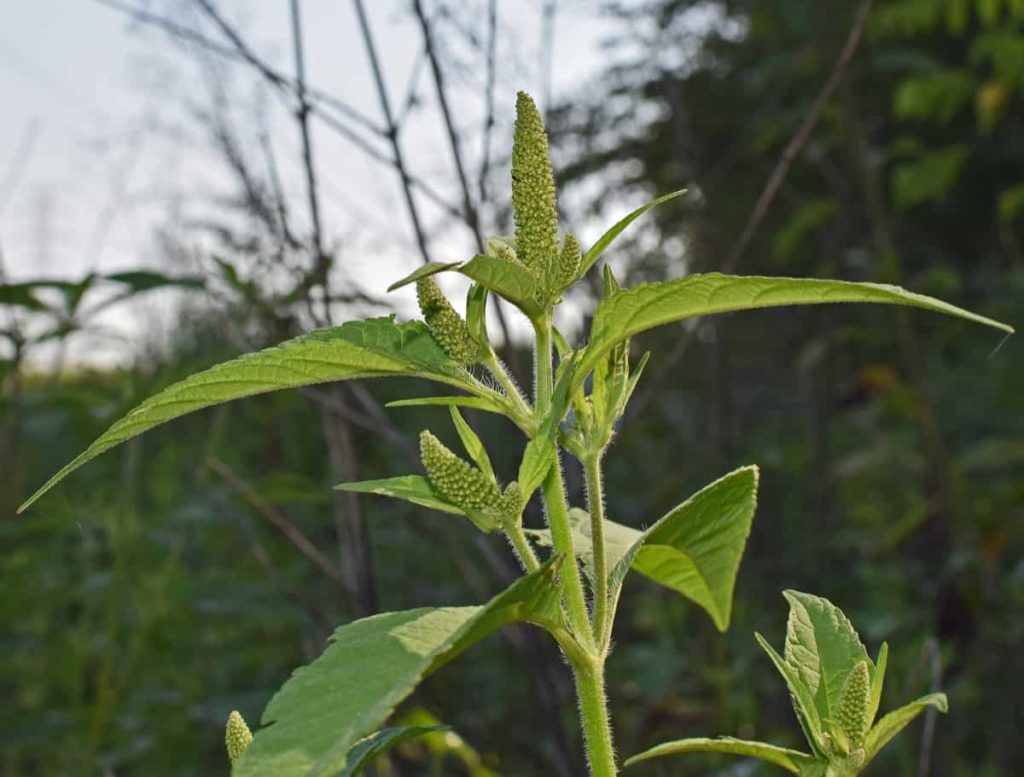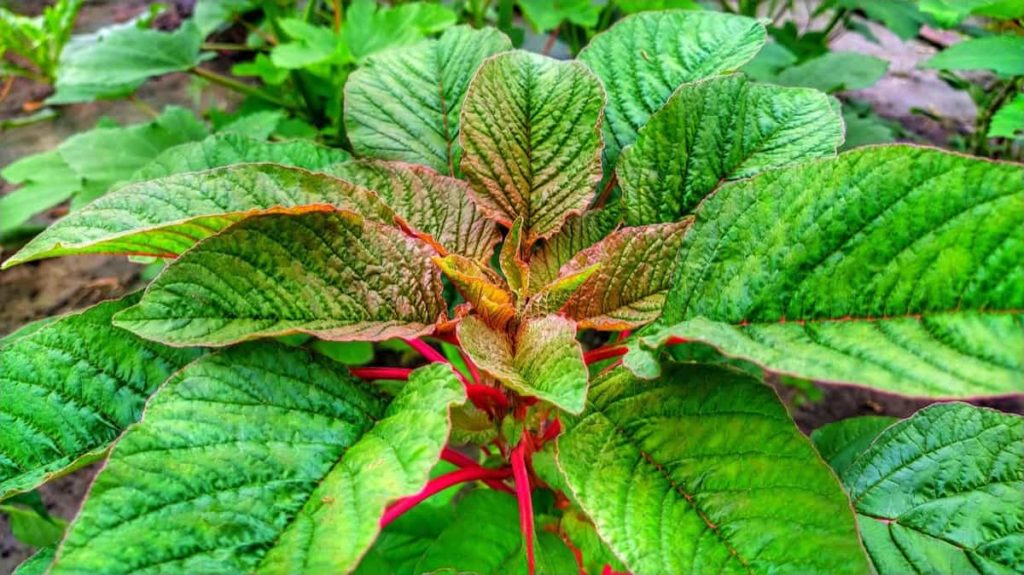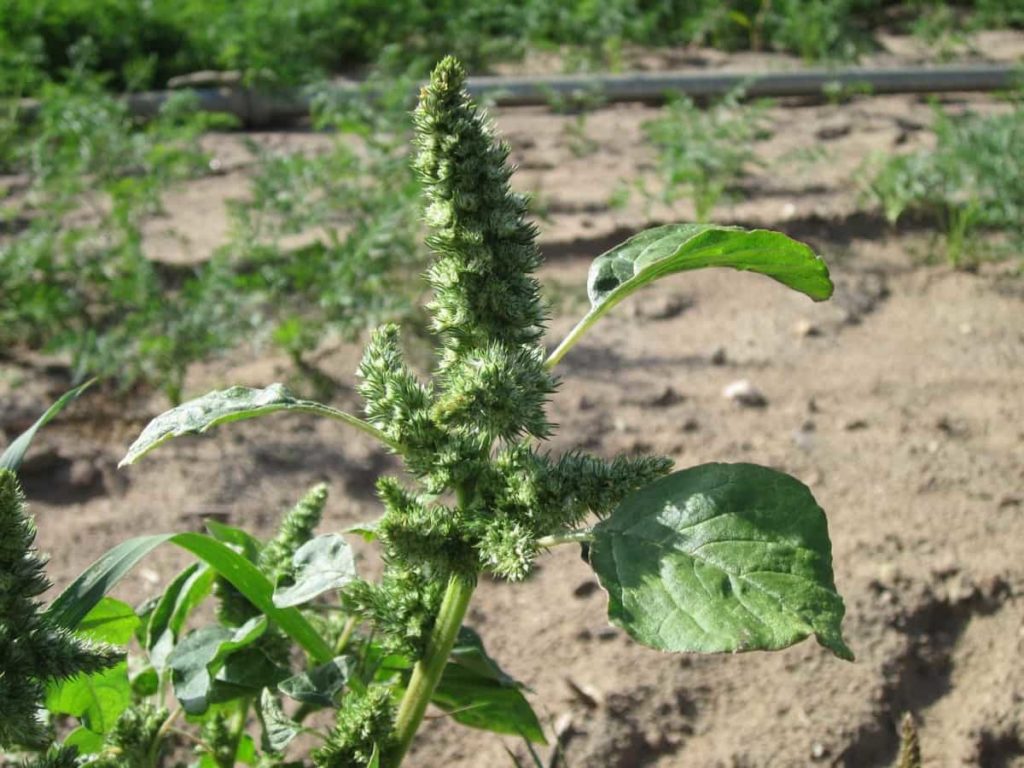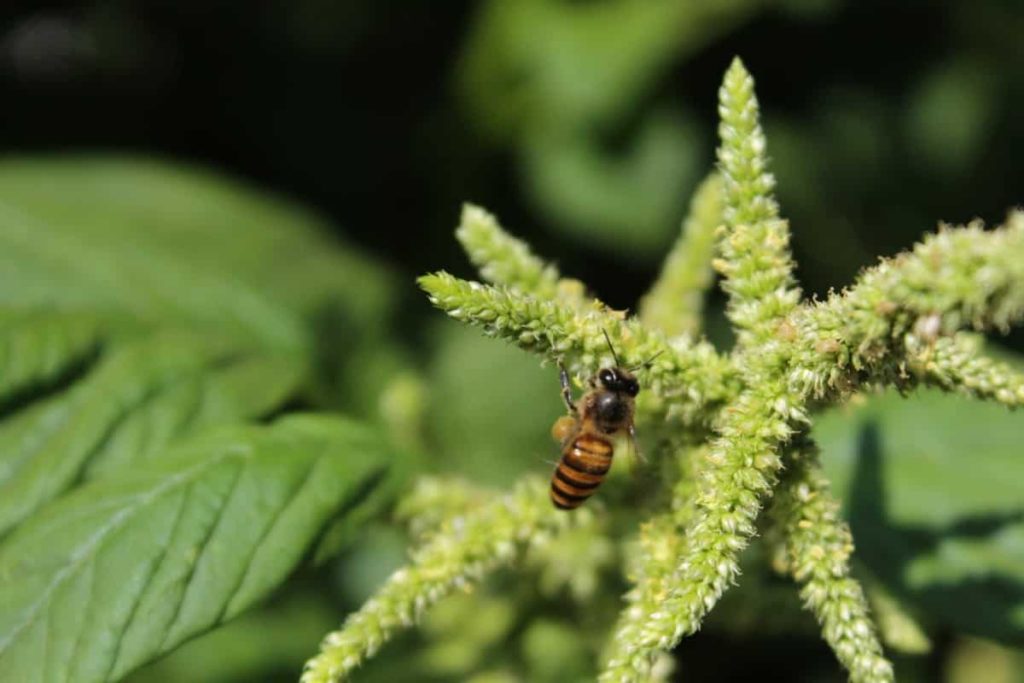Amaranth comes in various colors, with around 60 to 70 varieties growing throughout the year. The showy shape of the plant makes it an ideal crop for edible landscapes. Amaranth is a short-term frost tender plant that is both decorative and edible. This is famous for a summer bed and easy to grow; Amaranth looks dramatic and wildly pretentious with huge tassel-like crimson, purple, or green flowers or brilliantly colored leaves. Amaranth is an amazingly versatile plant that is a beautiful flower, a delicious vegetable, and a nutritious grain.

Best practices to grow Amaranth from seed to harvest
How long does Amaranth take to grow from seed?
- Amaranth needs an excellent hot summer for this entire development period of 30 to 50 days. Sown directly in late spring, once at night, the temperature is consistently above 10°C. Seeds germinate within 4 to 10 days.
- Leaves can be cut after 30 to 35 days, and harvesting can continue for the next 2 to 3 months. Amaranth is best suited as microgreens, especially red.
- Amaranth grains are usually ready for harvesting within three months of planting. But you can start picking leaves much earlier than that. Just cut the bottom, and cut the old leaves first, taking care not to damage the stems of the inner leaves.
How do you harvest Amaranth leaves?
- Amaranth leaves can be harvested using two methods which are thinning and clipping. With clipping, you must cut or pick young green leaves from plants using a scissor. However, if you are harvesting Amaranth leaves using thinning, you must uproot the entire plant.
- For harvesting Amaranth seeds or grains, wait until the flowers turn brown and dry in the fall. Cut the whole flower stalk, sit in a dry place for a few weeks, or put it in a paper bag.
- Stir the seed inside the bag to separate it from the flowers after it has dried. Then, just wash the seed straw and enjoy the high-protein grains as you would quinoa or millet.
- Thin young plants 18 inches apart when their first true address has sprouted. Amaranth seeds fall easily from flowers and plants, so you can expect them to come out annually.
What is the yield of Amaranth?
- You should cut the entire plant a few inches above the ground level to harvest young Amaranth greens. Often the plant will sprout again and produce a second and even a third green crop. Amaranth is a heat-tolerant crop that can produce fresh greens all summer.
- The farmer can yield 10 to 12 tonnes of green leaves per acre.
Is it easy to grow Amaranth from seed?
- Amaranth is a tough, easy-to-grow green vegetable cooked and eaten like Spinach. Many varieties with tender leaves are available in green and red colors. Amaranth’s growing is very simple. They prefer warmer climates, full sun, and well-drained soil. Water them in dry periods, once or twice per week.
- It is quite easy to grow with Amaranth seeds. Start seeding indoors 6 to 8 weeks before the last expected frost for best results. Use a light seed starting mix, and keep the seedlings water and bright light consistently once they emerge. Transplant in the garden after the threats of frost have passed.
- Provided the temperature is about 22°C, Amaranth seeds usually germinate within a week. As they do, give them a lot of light to prevent weak, tall growth. Once your seedlings are about three inches long and the roots protrude from the Rockwool cube, they are ready for transplantation.
In case you missed it: Growing Organic Amaranth In Pots, Backyard At Home

Does Amaranth come back every year?
- All Amaranths are annual or short-duration rainfed with oval, pointed leaves of different colors, followed by minute flowers and tassel-like spikes that last until the end of summer. Amaranth leaves have a fresh, herbal taste and are very good food and fresh. The plant thrives on consistent pruning, so a cut and come again method is best for Amaranth.
- On the main plant, you can use the cut and come again method. Cut the stalk 10 inches above the ground using a sharp gardening knife and use it as needed. Amaranth will grow back and be ready for harvesting again in another month.
When should I plant Amaranth seeds?
- In India, Amaranth can be grown throughout the year. It grows well in the hot Indian summers. Amaranth is called a cosmopolitan genus because the number of species is known for their wide range of utility and economic importance.
- Amaranth seeds need warm soil to grow and can be damaged by spring frosts, so wait until the soil starts to warm up to plant this crop. Harvesting mature plants after a light frost in the fall is easier.
- Sow seeds from mid-spring to early summer, barely covered with soil in uniform rows. Keep the soil moist until the seedlings sprout. Until the plants are 4 inches long, slowly thin the plants to 18 inches. As the plants grow, they will shade most of the summer weeds.
Should you pinch Amaranth?
- It is appropriate to pinch the plants for the best results and more manageable flowers. If they’re not pinched, they’re too big (more than 6 feet long) and have thick stems too big to use in most flower arrangements.
- Pinch the flowers first or let them grow for a more open look to encourage a bushy plant with more flowers. They will open much better if cut regularly.
- Cut back the center bud/stem when the plants are knee-high to pinch Amaranth. This will prompt the plant to produce multiple stems that are small and easy to use.
Can you grow Amaranth from store bought seeds?
- Growing Amaranth from store-bought seeds is a fun project for kids and adults alike. Although Amaranth grows quite well with seeds, it is often easier to grow from a few large plants transplanted in the garden. In both cases, it needs to be grown in full sunlight and regular water.
- Amaranth prefers light soil that drains well. Loosen the ground where you will plant your seeds so that they get a good start.
- Just prepare your dirt, then drop about 6 to 8 seeds into one square foot of the ground. Lightly cover the seeds with soil and remain moist until they sprout, which should take about two weeks. As soon as the Amaranth plant starts growing, thin the weak ones until you have a strong seedling.
In case you missed it: Growing Hydroponic Amaranth (Thota Kura) Guide

Where does Amaranth grow best?
- Amaranth plants grow on average with equal amounts of nitrogen and phosphorus in well-rich, well-drained soils. Like many vegetable crops, they also require at least five hours of sunlight daily to perform well. Though they grow best in moist, well-drained soil, they will also tolerate dry soil.
- Amaranth does best in the full sun in the northern part of its range, but in a warm southern climate, it can benefit from some shade in the afternoon. Usually, plant Amaranth in a place where it will get at least six hours of sunlight daily.
Should I cover Amaranth seeds?
- Lightly cover the seeds and keep them constantly moist at about 16°C. Place the plants under a bright light after the seeds sprout.
- Cover the pots with a plastic wrap or plastic dome that fits on top of the seed starting tray to speed up the germination. This helps keep the seeds moist before growing. Remove the cover when you see the first signs of green.
- Once your seedlings are about three inches long and the roots protrude from the Rockwool cube, they are ready for transplantation. Remember that Amaranth will be the most productive in the full sun (i.e., at least six hours of direct sunlight).
Can Amaranth grow in pots?
- Decorative varieties are well suited for large containers, as are plants grown for greenery. Grown for seeds, Amaranth is better suited for a warm vegetable bed or border.
- The container is large enough for different types, and you should use a commercial potting mix.
- To sow seeds, you’ll need to sprinkle them thinly on a medium-sized pot, and the potting be filled with loose soil. The soil has to be topped with a thin layer of compost, or you can also use potting soil for it. The soil then has to be watered a little.
- Scatter the soil in a pot with seeds and spread it evenly, then water it in the same way or spray it. Cover the pot with plastic wrap. Place the pot on the windows. Amaranth is a lightweight and heat-loving plant, so windows are ideal for growing it.
- You can not only grow Amaranths in the garden or grow Amaranth in containers but also on apartment windows.
Should I soak Amaranth seeds before planting?
- Pour cold water on the seeds, and soak them in a container for two hours. Most seeds require more time to soak, but Amaranth seeds are so small that a couple of hours are enough to prepare them for sprouting.
- Soaking Amaranth helps in digestion, but it is not necessary at all. You can soak Amaranth overnight or soak it for at least 30 minutes if you’re short on time. You don’t need to soak Amaranth, but it speeds up a bit.
In case you missed it: How To Grow Thotakura (Amaranth) In Pots

How long are Amaranth seeds viable?
- Even after 30 months of dry storage at low temperatures, the seeds retained the ability to remain fully viable. Common Amaranth seeds are dispersed in air, water, farm machinery, manure, sewage sludge, and manure.
- About 80% of seeds lose viability within the first 12 months, and about 5% remain viable after 36 months. The seed initially loses viable more quickly when left on the surface, compared with burial 6 inches deep.
What grows well with Amaranth?
- Amaranth, also known as Pigweed, is another great dynamic accumulator. It grows well with Corn, Onions, Pepper, and Brinjal. It helps in producing higher quantities of Potatoes. It also helps loosen the soil for herbal vegetables like Beetroot, Carrots, and Radishes.
- The best companion plants for Amaranth are Eggplant, Corn, Tomatoes, Marigolds, and cover crops like Beans and Peas. Amaranth is excellent at providing live trails for vining plants and offers partial shade to the garden. It’s also great to use it as mulch when it starts growing too large.
What can you not plant near Amaranth?
- Avoid planting next to Celery or Tomatoes. Amaranth creates a great mulch between the rows by competing with weeds and preserving ground moisture.
- Some sources claim that Amaranth should not be grown with crocuses, but no one gives a reason for it. It is probably better because all parts of crocuses are toxic.
Why is my Amaranth dying?
- Root rot can be a big problem in wet, dense soils or periods with frequent and abundant rainfall. Once the root has rotted, it is necessary to remove the plant. Your best defense against root rot is maintaining well-drained soil and not overwatering the plant.
- The damping-off fungus requires more moisture, so thin your seedlings immediately to prevent overcrowding, avoid too much water (especially cool sunless days until the water evaporates faster), and ensure good ventilation and air circulation.
What temp can Amaranth tolerate?
- Seeds need a minimum soil temperature of 10°C to grow but grow very fast at a temperature of 20°C or higher. For the first harvest, start planting indoors and transplant after the last frost. A tropical plant, Amaranth grows best at temperatures between 20°C to 30°C.
- Amaranth plants are prone to frost. Amaranth prefers hot weather. You can start Amaranth seeds indoors six to eight weeks before the last frost in your area.
In case you missed it: Homemade Fertilizers for Root Vegetables: Potatoes, Carrots, Beetroot, Onions, Radishes, Turnip, Ginger, and Garlic

How do you start Amaranth?
- Amaranth plants will grow easily self-seed in the garden. When they sprout in the spring, Thin the volunteer seedlings to a distance of about 10 to 18 inches or carefully dig them up and transplant them elsewhere.
- Since Amaranth is a tropical zone plant sensitive to frosts, starting indoors will help it get a head start and help it survive till hot weather.
- Sown directly in late spring, once at night, the temperature is consistently above 10°C. The best temperature of soil for growing: is 18°C to 24°C. Sow the seeds ¼ inch deep into well-drained soil throughout the sun. Amaranth seeds should germinate in 4 to 10 days.
Is Amaranth need full sun?
- Amaranth can bear full sunlight as well as partial sunlight. Remember that Amaranth will be the most productive in the full sun (i.e., at least six hours of direct sunlight). Some varieties of Amaranth can be up to eight feet long. But people who grow specifically for leaf production usually reach only a foot or two when mature.
- In summer, all your leafy vegetables become bitter. All but one, Amaranth. Although Amaranth can be grown throughout the year, these greens thrive well in the Indian summer. Unlike most leafy greens, the crop grows happily in hot and humid weather.
How deep should Amaranth be planted?
- Amaranth is planted either directly by seed or transplantation. The choice of planting method depends on the availability of seeds and labor and may also vary with the growing season.
- While Amaranth plants are tall, they are not necessarily wide or bushy, so you can plant them at a distance of 10 to 18 inches. The closer you put them, the bigger they will once they grow.
- Sow the seeds ¼ inch deep into well-drained soil throughout the sun. Seeds should grow in 4 to 10 days. Thin seedlings up to 10 to 14 inches in rows at a distance of 20 inches.
In case you missed it: How to Grow Tomatoes from Seeds: Starting from Scratch, A Beginners Guide to Indoors, Outdoors, and in Pots

Does Amaranth need a trellis?
- Some varieties of Amaranth can be up to eight feet long. But those who grow specifically for leaf production usually reach only a foot or two when mature. Regardless, consider the predicted size of your type when choosing a plantation location. Amaranth is a low-maintenance crop.
- Amaranth is 4 to 6 feet long, and tall varieties may need to be staked to stay upright when they become heavier on top with a cluster of mature seeds.
Conclusion
Whether grown for its beautifully colored and textured plumage or as a crop, Amaranth is an easy plant to cultivate and can brighten up your garden year after year. Many varieties of Amaranth plants can grow up to 10 feet tall. Its stalk is a popular recreational trellis for vining plants like Beans and Peas. Amaranth is also a warm-season leafy vegetable with edible leaves that you can enjoy like a salad green.
- Seasonal Flower Gardening: Best Practices for Spring, Summer, Fall, and Winter
- How to Grow Hibiscus from Flower
- Plantation Ideas for Home Decoration: A Beginners Guide
- Flower Garden Designs and Layouts for Beginners
- Planting and Spacing Techniques in Papaya: A Beginner’s Guide
- Growing Gold: Essential Techniques for Planting Pineapples
- How to Make Kalanchoe Plant Bushy: Home Remedies and Solutions
- 11 Reasons Why Your Gardenia is Not Blooming: Home Remedies and Solutions
- Eco Elegance: The Guide to Designing a Drought-Tolerant Landscape
- Gardening on a Slope: Strategies for Hillside Landscaping
- Nourish and Flourish: Top Organic Mulches for Thriving House Plants
- Everything You Want to Know about Indian Mogra Flower: Discover Uses and Growing
- Green Thumb Success: Expert Tips for Cultivating Greenhouse Pumpkins All Year Round
- Maximize Growth & Flavor: The Ultimate Guide to Companion Planting in Herb Gardens
- How to Control Rhododendron Problems Naturally: Home Remedies and Organic Ways to Fix Them
- Natural Magic: The Remarkable Benefits of Cinnamon for Plants
- Best Steps to Revive Dying Tulip with Natural and Organic Treatment
- 10 Reasons Why Your Angel Trumpet is Not Blooming: Remedies and Treatment
- How to Fix Periwinkle Leaf and Flower-Related Problems: Natural Remedies and Solutions
- How to Fix Zinnias Leaf and Flower Problems: Discover Natural and Home Remedies
- Organic Steps to Induce Lemon Tree Flowers: A Comprehensive Guide
- Bloom Booster: Crafting the Perfect Homemade Bougainvillea Fertilizer
- Optimizing Growth: A Guide to Applying NPK Fertilizer for Potted Plants
- 10 Best Homemade Fertilizers for Rubber Plant: DIY Recipes and Application Method
- How to Boost Female Pumpkin Flowers: Effective Steps for More Flowers and High Yields
- Transform Your Indoor Garden: Top Benefits of Pink Salt for Houseplants
- 10 Best Homemade Fertilizers for Peacock Plants (Calathea): Easy DIY Guide
- Unlock Blooms: 9 Reasons Why Your Potted Chrysanthemum is Not Blooming
- 8 Reasons Why Your Potted Hibiscus is Not Blooming: Fix it with Simple Solutions
- Unlock Blooms: 9 Key Reasons Your Potted Frangipani Won’t Flower
- 10 Reasons Why Is My Ice Plant Not Blooming: Remedies and Treatment
- 10 Reasons Why My Potted Hydrangea Not Blooming: Treatment and Remedies
- 10 Reasons Why is My Wisteria Not Blooming: Remedies and Treatment
- 10 Reasons Why is My Goldfish Plant Not Blooming: Remedies and Treatment
- Maximize Your Space: Ultimate Guide to Balcony Gardening with Grow Bags
- 10 Reasons Why Your Iris is Not Blooming: Remedies and Treatment